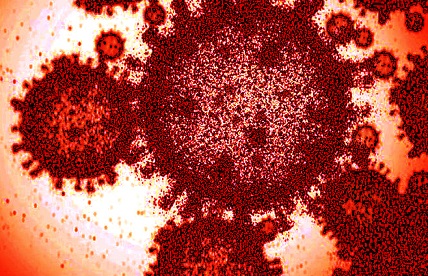Nikhil Prasad Fact checked by:Thailand Medical News Team Dec 30, 2024 3 months, 2 weeks, 1 day, 10 hours, 40 minutes ago
Medical News: Understanding CRTC3 and its Impact on Virus Replication
Researchers from Sichuan University, the Pengzhou People Hospital, and the Kunming Institute of Zoology, Chinese Academy of Sciences, have uncovered a significant mechanism that might redefine how we understand and combat SARS-CoV-2. Their study focused on a protein known as CRTC3 (CREB-regulated transcription coactivator 3) and its relationship with the virus's replication process.
 CRTC3 Role in SARS-CoV-2 Replication
CRTC3 Role in SARS-CoV-2 Replication
CRTC3, part of a family of coactivators involved in cellular processes, is now shown to inhibit SARS-CoV-2 replication by targeting the virus's RNA-dependent RNA polymerase (RdRp). RdRp is crucial for the replication and survival of RNA viruses, including SARS-CoV-2, the virus responsible for COVID-19. This
Medical News report explores their findings and the potential implications for future treatments.
How CRTC3 Inhibits Virus Replication
The study revealed that CRTC3 interacts directly with RdRp's catalytic subunit, NSP12. This interaction reduces the enzyme's ability to replicate the viral RNA. Using HEK293T cells, researchers demonstrated that overexpressing CRTC3 significantly reduced RdRp activity, thereby impairing the virus's ability to multiply. Conversely, when CRTC3 was suppressed, the virus replication rate increased dramatically.
By employing various advanced techniques, including gene knockdown and immunoprecipitation assays, scientists observed how CRTC3 exerts its inhibitory effect. They also explored the impact of mutating specific residues of CRTC3, discovering that some modifications weakened its interaction with NSP12 and its antiviral efficiency.
Mechanism of Antagonism by CREB
Interestingly, the study revealed that another protein, CREB, could antagonize the inhibitory effects of CRTC3. While CREB itself had no significant impact on RdRp activity when overexpressed, its presence reduced the effectiveness of CRTC3. The interplay between these two proteins highlights the complexity of the virus-host interaction and opens avenues for further investigation.
Expanding the Scope to Other CRTC Family Members
Beyond CRTC3, researchers examined the roles of its family members, CRTC1 and CRTC2. Both proteins demonstrated inhibitory effects on the replication machinery of SARS-CoV-2 and Middle East Respiratory Syndrome coronavirus (MERS-CoV), albeit to varying degrees. CRTC3 emerged as the most effective inhibitor among the three. These findings suggest that the entire CRTC family may play a broader role in viral suppression.
Implications for Treatment Development
Understanding the mechanisms by which CRTC3 restricts virus replication could lead to innovative antiviral strategies. The study's findings may guide the design of drugs that mimic or enhance the activity of CRTC3, potentially offering a novel approach to treating COVID-19 and other co
ronavirus infections. Moreover, targeting the interaction between CRTC3 and CREB might provide an additional layer of therapeutic intervention.
The research team employed several methods to verify their results. They used dual luciferase reporter assays to measure RdRp activity and RT-qPCR to quantify viral RNA levels. Experiments were conducted in cell lines, including HEK293T and Vero E6 cells, and authentic SARS-CoV-2 strains were used to validate the results.
The study also examined how phosphorylation, a common cellular process, affects CRTC3's function. Specific mutations at phosphorylation sites altered the protein's inhibitory capacity, underscoring the intricate regulation of its activity. Furthermore, CRTC3's localization within cells - whether in the nucleus or cytoplasm - played a critical role in its interaction with RdRp.
Conclusion
The research conducted by institutions like Sichuan University and the Kunming Institute of Zoology has provided groundbreaking insights into the molecular battle between SARS-CoV-2 and human host factors. CRTC3 emerges as a crucial player in limiting the virus's ability to replicate. By targeting the virus's RdRp, CRTC3 not only hinders its replication but also paves the way for new therapeutic strategies.
While the findings are promising, much work remains to translate this knowledge into clinical applications. Future studies will focus on understanding the broader implications of CRTC family proteins in viral infections and exploring potential pharmaceutical interventions to harness their antiviral properties.
The study findings were published in the peer-reviewed journal: Virologica Sinica.
https://www.sciencedirect.com/science/article/pii/S1995820X24002074
For the latest COVID-19 News, keep on logging to Thailand
Medical News.
Read Also:
https://www.thailandmedical.news/news/the-role-of-g3bp-in-sars-cov-2-replication
https://www.thailandmedical.news/news/fusion-peptide-of-sars-cov-2-unveiled-as-a-key-agent-in-membrane-disruption
https://www.thailandmedical.news/articles/coronavirus
